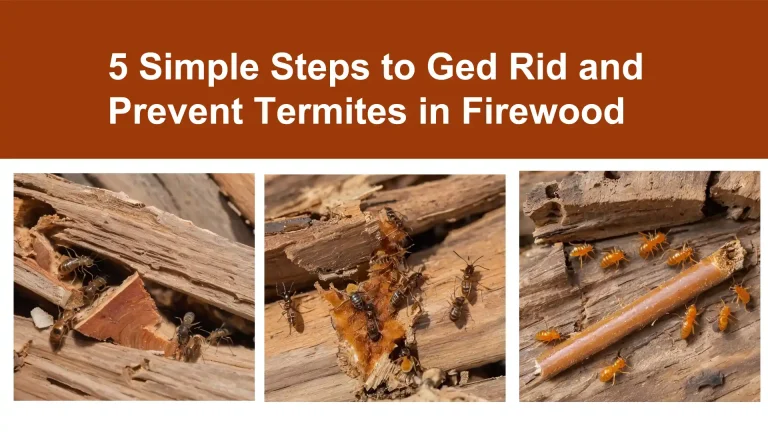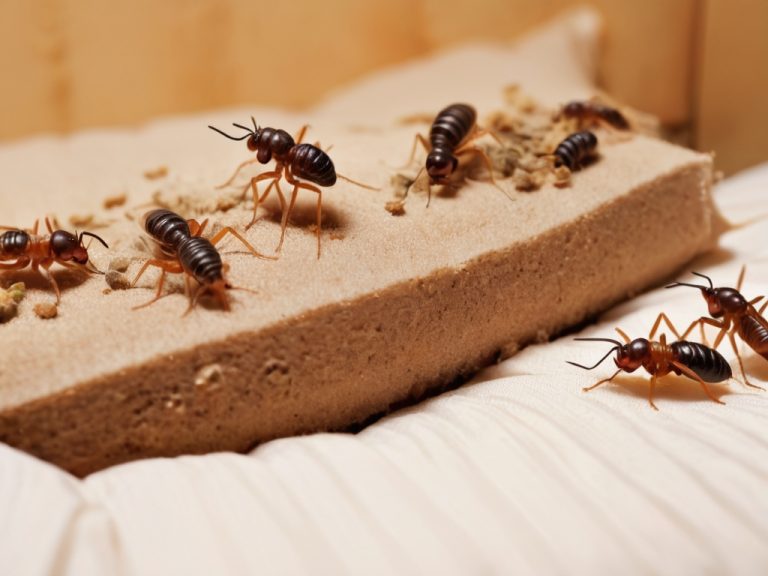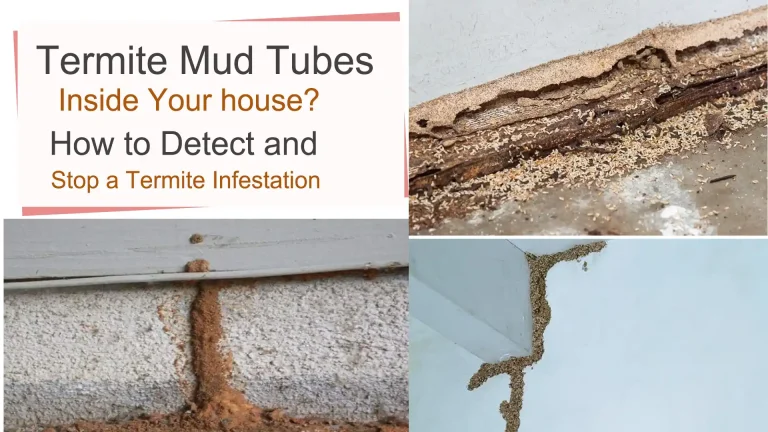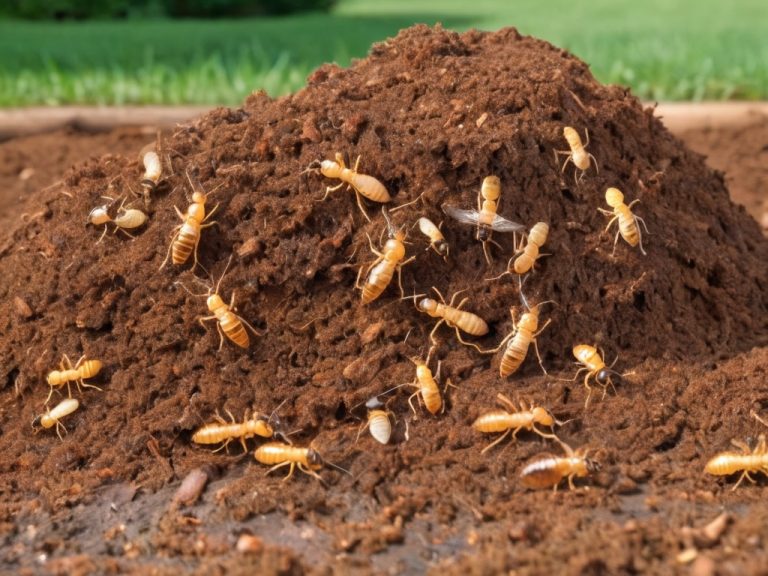Termites in Bathrooms – How to Eliminate and Prevent
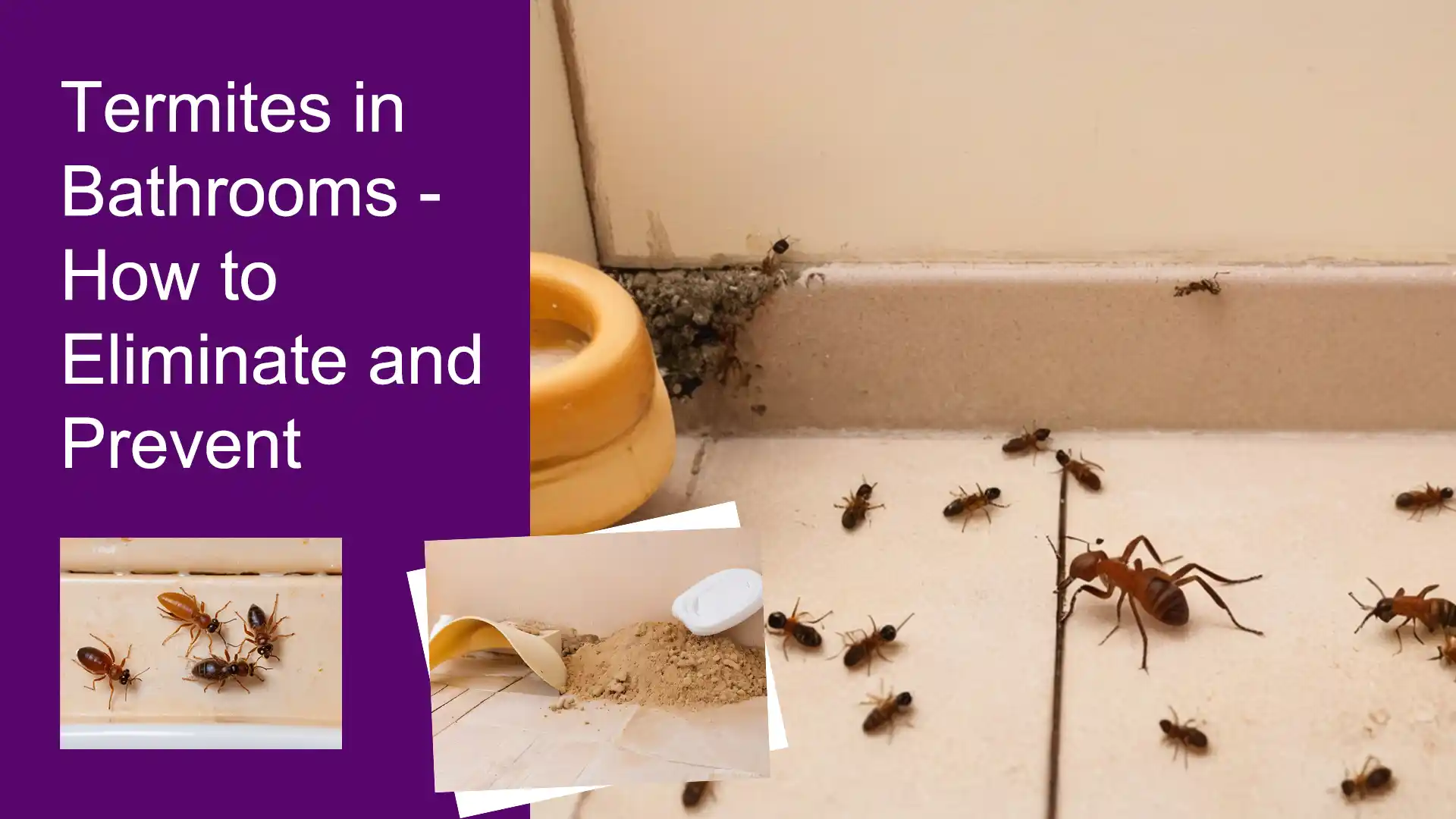
- Signs of Termites in the Bathroom
- How Do Termites Get in My Bathroom?
- Signs of Termites Inside a Bathroom
- Finding Dead Termites in Bathroom
- What To Do If You Find Termites In Your Bathroom?
- How To Get Rid of Termites in Bathroom
- Using Natural Methods to Get Rid of Termites
- Preventing Future Termite Problems in Bathroom
- Key Takeaways for Preventing Termites in Bathrooms
Finding termites termite in your bathroom can be an unsettling experience. The damp bathroom is an ideal environment for termites to thrive, and a sign that your home may have a more serious termite infestation. This guide will cover how to identify, eliminate, and prevent termites in bathrooms.
Signs of Termites in the Bathroom
While the pests themselves may be difficult to spot, there are a few key signs of termites inside a bathroom:
- Winged termites swarming near windows, vents, or along the floor
- Mud tunnels built along walls, tile, or near plumbing
- Hollow sounding tile, walls, or flooring
- Bubbling or peeling paint or wallpaper
If you observe any of these, there’s a good chance your bathroom has become infested with termites.
Termites May Live in Bathroom Walls and Flooring
The damp conditions most bathrooms provide make an ideal environment for termites. Bathroom walls and flooring are common harborages since they border the moist soil outside.
Cracks in tile, gaps along plumbing pipes, or voids in walls all allow termites access from their underground colonies. Termites can easily exploit these openings to enter your bathroom undetected.
Once inside, they may feed and tunnel through walls, tile, floorboards or drywall. It can be especially difficult to detect behind tile and bathtubs if the infestation is contained just in the bathroom.
How Do Termites Get in My Bathroom?
There are a few ways termites find their way into bathrooms:
1. Through Connected Wall Voids
In homes with basement foundations, termites often build extensive mud tunnel networks linking soil to wood. They may reach your bathroom from connecting voids inside walls or where pipes run through.
2. Up ThroughSink and Tub Drains
Most bathrooms have direct soil access from sink, shower, and tub drains. Subterranean termites can follow pipes upward into wall voids or the drain area in search of wood. Damaged or improperly sealed drains provide an easy entry point.
3. By Flying In ThroughVents
Seeing winged termites emerge inside from bathroom vents is a common occurrence. This signals swarmers are arriving from an outdoor colony. Openings around ductwork or vent covers allow them to squeeze through into your bathroom.
Signs of Termites Inside a Bathroom
Spotting signs of termites living inside your bathroom can be tricky. But there are a few key indicators:
Mud Shelters Along Walls
Look carefully along bathroom walls and base trim for small mud shelter tubes. Dozens of working termites build these to aid travel and retain moisture. Seeing them signals an active termite colony may be present.
Swarming Near Plumbing Fixtures
Winged reproductive termites swarming near drains or along tub and sink overflow holes likely indicates a nest inside voids leading to soil. Many attempt to start new colonies here. Their presence confirms an existing bathroom termite problem.
Hollow Tile, Walls, or Flooring
Tap along bathroom walls, tile, or floor areas listening for hollow sounds. This can signify termites have fed inside and damaged these materials. Feeding damage may only be contained in the bathroom leaving the rest of the home unaffected.
Finding Dead Termites in Bathroom
Discovering dead termite swarmers along bathroom walls or near drains may also indicate activity. Swarmers often die off shortly after emerging. Seeing several together means they originated from inside voids containing moisture – conditions favorable for continued activity.
Their presence should warrant further bathroom and home investigation to pinpoint harborage areas. Ongoing activity could spread leading to greater structural damage.
What To Do If You Find Termites In Your Bathroom?
Discovering termites in your bathroom calls for quick action to eliminate and prevent spread. Here are important first steps to take:
- Inspect the entire home for other signs of termites – don’t assume activity is isolated
- Seal up bathroom entry points like cracks, pipe holes, and openings around vents
- Install termite monitoring stations around the building exterior to track activity
- Schedule professional pest control treatment of the bathroom and if necessary, the rest of the structure and surrounding soil.
Catching a bathroom termite invasion right away is key to preventing major damage. Quickly sealing off their access coupled with effective elimination methods limits continuation conditions.
How To Get Rid of Termites in Bathroom
Once termites have established inside, getting rid of them involves treating both inside bathroom harborage zones as well as surrounding soil areas containing colonies:
Inspect and Treat Bathroom Voids
Treatment requires accessing bathroom wall voids, under sink cabinet areas, below tub/drain access holes, and under/behind bathroom tile that borders soil.
Applied spot treatments directly into infested void spaces maximizes contact with termites while limiting use along vulnerable plumbing pipes and fixtures. This precision placement also minimizes potential for any indoor pesticide exposure.
Treat Surrounding Outdoor Areas
As a follow up measure, treating a perimeter around the home helps create a protective termite barrier. This limits their ability to re-infest the bathroom later on.
The optimal solution is to have soil treated with professional grade termiticide like fipronil, imidacloprid or permethrin. Treated zones around foundation walls, slabs, and utility entryways provides residual activity offering several years control.
DIY soil drench methods are also available using borate solutions. But results are often mixed depending on concentration and thoroughness of application.
Maintain Indoor Bathroom Treatment
Periodic follow up spraying inside bathroom wall voids maintains protective chemical residuals. This keeps termite mortality constant, limiting their ability to recover entering from other directions.
Using Natural Methods to Get Rid of Termites
For those wishing to avoid synthetic pesticide use inside, borates can be applied into wall voids to treat more directly. Borate treated bait stakes positioned through bathroom walls also lures termites internally upon feeding.
Natural diatomaceous earth dust is another effective contact killer when placed directly in termite runs and mud shelter tubes. The sharp DE shards physically damage their exoskeleton causing death by desiccation.
Orange oil and neem oil sprays also repel and kill termites on contact while still safe around people and pets. Results are often short term but can scare the termites away from your bathroom for some time, preventing more from coming back .
Preventing Future Termite Problems in Bathroom
Once a bathroom termite infestation has been eliminated, focus turns to prevention. Keeping an eye out for further signs while restricting their access is key for long term protection.
Sealing Possible Termite Entry Points
Caulking and sealing all cracks in bathroom tile flooring and along wall voids limits potential openings surrounding pipes and vents. Steel mesh can also be positioned under sinks and tubs before re-tiling these zones.
Covering exterior soil around bathroom foundation walls with coarse gravel also hampers termite tunneling up from below. Their inability to dig through rocks often deters upward movement.
Monitoring Your Bathroom for Termite Activity
Installing termite monitoring stations both inside bathroom voids and outside perimeter walls enables early detection. Sticky cardboard monitors bait termites while making them visible for counting.
Periodic checking under bathroom sinks, long plumbing runs and under floor tile near external walls helps uncover signs like new mud shelter tubes. Taking quick action at first signs prevents further infestation.
Key Takeaways for Preventing Termites in Bathrooms
- Fix plumbing leaks and bathroom dampness issues
- Caulk bathroom cracks and crevices
- Seal pipe, vent and drain entry points
- Monitor moist voids for termite activity
- Treat actively at first signs of termites
Stopping conditions that allow termites into your bathroom is the most critical prevention step. Eliminating excess moisture while closing up access limits the chances of repeated termite bathroom invasions going forward.


